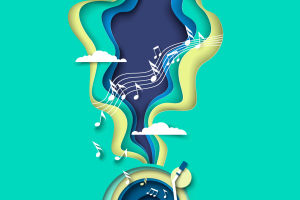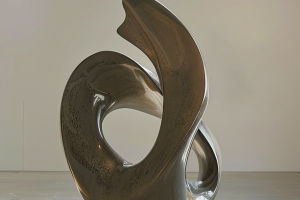Jazz is more than just music—it's a living, breathing form of personal expression. Have you ever listened to a jazz solo and felt like the musician was speaking directly to your soul?
That's no accident. Jazz thrives on individuality, creativity, and spontaneity. In this article, let's explore how jazz music powerfully embodies personal freedom and why it continues to inspire both musicians and listeners across generations.
Jazz Origins: Born from Struggle and Spirit
Jazz emerged in the early 20th century, primarily in New Orleans, a cultural melting pot rich with African, Caribbean, and European influences. From the very beginning, jazz was a music of liberation.
It developed out of blues, ragtime, and spirituals—musical forms that African Americans used to express both their daily struggles and their dreams of freedom.
Because jazz was born in an environment of oppression, its very existence is a form of resistance. Musicians used improvisation not just as a technique but as a voice—an act of reclaiming personal power in a society that often denied it.
Improvisation: The Ultimate Expression of Self
Perhaps the clearest way jazz expresses individual freedom is through improvisation. Unlike classical music, where notes are precisely written and expected to be played as composed, jazz gives musicians the freedom to reinterpret melodies, shift rhythms, and invent new phrases on the spot.
When a saxophonist takes a solo in a jazz performance, they're not just playing notes—they're telling a story in real time. That story is unique to the player and the moment. No two performances are the same, and that's the magic. Improvisation makes every performance personal. It's where emotion, thought, and experience come together.
Personal Style: No One Sounds the Same
In jazz, personal style is not only accepted—it's celebrated. From the laid-back cool of Miles Davis to the fiery energy of Charlie Parker, jazz musicians cultivate their own sounds. Listeners can often identify a jazz musician after just a few notes because of their tone, phrasing, and rhythmic approach.
Even when playing the same song, two jazz artists will interpret it differently. This reflects the genre's deep respect for individuality. A musician is encouraged to find their voice, rather than imitate someone else. In many ways, jazz teaches people to be proud of their uniqueness.
Freedom Within Structure: Jazz as Organized Chaos
While jazz is known for its freedom, it also has structure. Most jazz pieces follow a form—commonly the 12-bar blues or 32-bar song form. Within these frameworks, musicians can explore freely. It's a perfect metaphor for life: rules exist, but within them, there is space for personal interpretation.
This balance between freedom and form allows musicians to interact creatively. One soloist may take the lead, but the others follow, respond, and support. It's a conversation—a dialogue of ideas. In that shared space, musicians can challenge each other, build on one another's thoughts, and co-create something completely new.
Jazz Ensembles: Democracy in Action
Jazz bands often operate with a strong sense of democracy. While one musician may be soloing, the others are actively supporting them—listening, responding, and adapting. There is no strict hierarchy; leadership shifts from moment to moment, depending on who is soloing.
This democratic spirit nurtures mutual respect and freedom. Each member's voice matters. Everyone has the opportunity to shine, and collaboration becomes a celebration of multiple viewpoints rather than a single authority. It's an artistic embodiment of individual freedom within a community.
Cultural Identity and Jazz
For many musicians, jazz is a way to express cultural identity. From Latin jazz to Afro-Cuban jazz and beyond, artists bring elements of their heritage into the music. This openness to cultural fusion is another form of freedom—it welcomes diversity rather than resisting it.
Jazz becomes a tool for storytelling, for preserving heritage, and for bridging generations. By allowing space for these voices, jazz honors the rich variety of human experience.
Modern Jazz: Innovation Without Limits
Today, jazz continues to evolve. Artists blend it with hip-hop, electronic music, R&B, and more. This innovation is part of jazz's DNA. Musicians are free to redefine what jazz is and what it can become.
Emotional Freedom: Expressing the Inexpressible
Jazz also provides emotional freedom. Musicians can channel joy, sorrow, anger, and longing through their instruments. Because it's not limited by lyrics, jazz often expresses what words cannot. A trumpet cry or a piano whisper can move listeners in ways that feel deeply personal.
This emotional depth creates a powerful connection between artist and audience. The freedom to express pure feeling, without censorship or simplification, is part of what makes jazz so moving.
Education and Jazz: Teaching Expression
Jazz education emphasizes more than technique. Students are encouraged to listen, react, and explore their voice. Jazz camps, workshops, and school programs worldwide now include improvisation and composition, encouraging young musicians to develop creatively, not just technically.
According to a report from the National Association for Music Education, students who study jazz often demonstrate higher levels of creativity and problem-solving. This supports the idea that jazz doesn't just teach music—it teaches how to think independently.
Listener's Freedom: Interpreting with Imagination
The freedom in jazz doesn't only apply to performers. Listeners also play a role in interpreting what they hear. Because jazz is so open-ended, each person may take away something different. One listener may hear sadness in a solo; another may hear strength.
That ambiguity gives jazz a personal dimension—it allows each person to connect in their own way.
Conclusion: A Music of Possibility
Jazz is more than a genre—it values curiosity, creativity, and individuality. Whether musician or listener, jazz invites exploration, feeling, and authenticity.
So next time you listen to a jazz piece, ask yourself: What is the musician trying to say? And how does it resonate with your own inner voice?
Jazz, in all its beauty, reminds us: freedom isn't just a conceptual idea—it's something we live, breathe, and hear—one note at a time.


